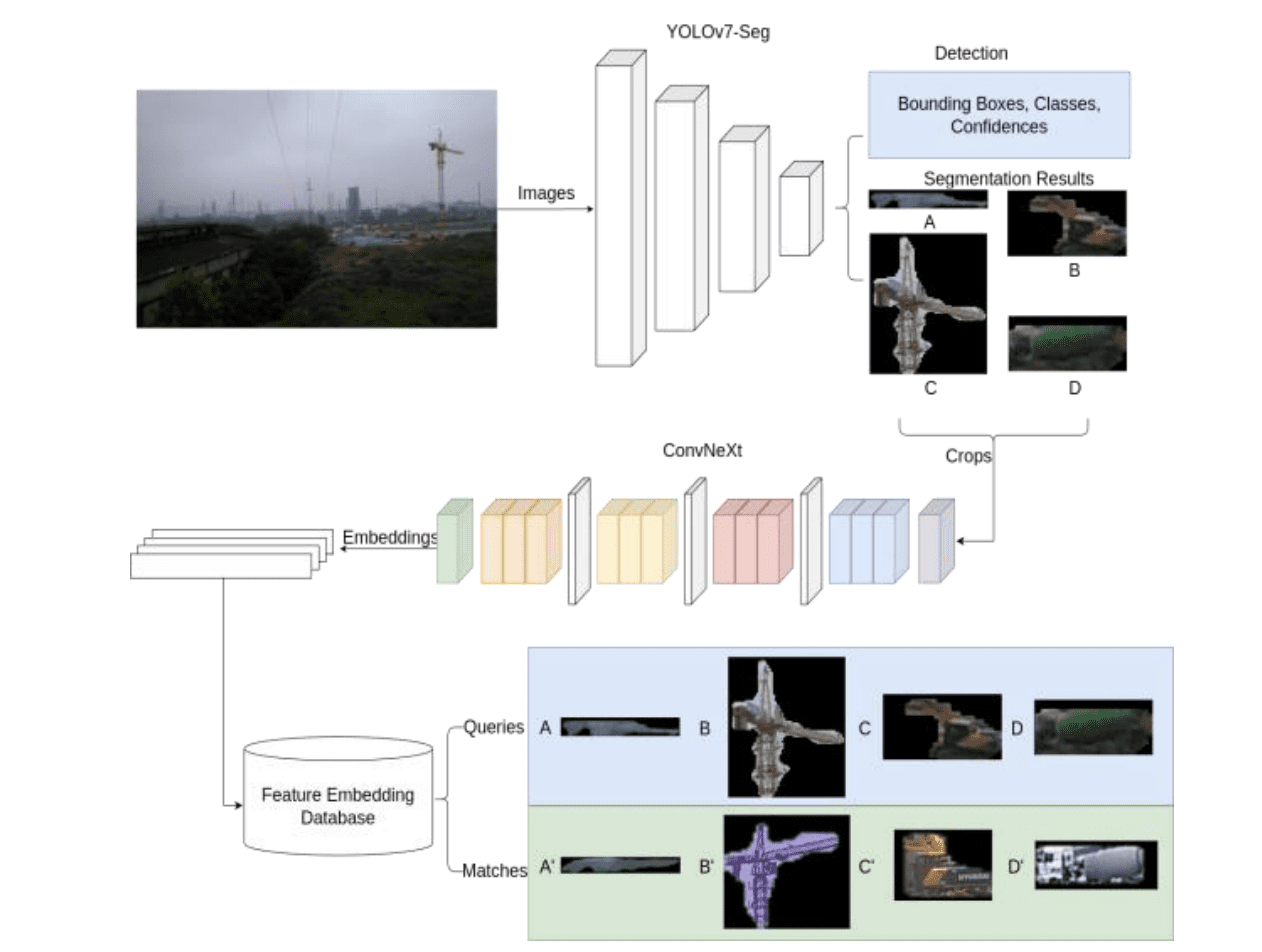Foreign object intrusion poses a significant threat to the reliable operation of power systems, and detecting these intrusions quickly and accurately is paramount to preventing disruptions. Xinan Wang from IEEE, Di Shi, and Fengyu Wang from IEEE address this challenge with a new framework for real-time detection and tracking of intrusions. Their system combines advanced image processing techniques, including a fast object localisation model and a feature extraction method that excels at distinguishing between objects, with a robust tracking algorithm. The resulting pipeline not only achieves high accuracy in diverse scenarios, but also operates efficiently on low-cost edge computing hardware, paving the way for scalable and practical deployment in critical infrastructure.
Aerial Threat Detection Using Deep Learning
This research details a system for detecting foreign objects near high-voltage power transmission lines, improving grid safety and reliability. Scientists leverage computer vision and deep learning techniques to automatically identify potential hazards from aerial imagery, such as that captured by drones, proactively reducing the risk of short circuits, outages, and safety incidents. This work covers the problem definition, proposed solution, and implementation, building upon existing work in object detection, computer vision, and power grid safety. The system employs a deep learning-based object detection system, experimenting with models like YOLOv7, YOLOv8, Mask R-CNN, and ConvNeXt to optimize performance.
The team refined loss functions and used data augmentation techniques to enhance model accuracy, focusing on efficient models for real-time or near-real-time detection, potentially automating inspection and improving safety. This system has the potential to significantly improve power grid reliability by proactively identifying and addressing potential threats, enhancing safety for workers and the public, and reducing inspection costs. It could also enable predictive maintenance, anticipating potential failures and scheduling maintenance proactively.
Real-time Intrusion Detection Using Deep Feature Encoding
Scientists have developed a three-stage framework for real-time detection of foreign object intrusion in power transmission systems, overcoming limitations of existing methods on low-cost hardware. The system uses a YOLOv7 segmentation model for rapid object localization, followed by a ConvNeXt-based feature encoder, trained with triplet loss, to generate highly discriminative embeddings representing each detected object’s unique characteristics. This innovative approach allows the system to generalize effectively, even when encountering previously unseen objects, without costly retraining. The triplet loss function optimizes embeddings to maximize separation between object types and minimize variance within each type, improving robustness in challenging conditions. To ensure reliable tracking of multiple objects under motion and occlusion, the researchers implemented a feature-assisted IoU-based tracker, leveraging robust feature embeddings to associate objects across consecutive frames. The entire pipeline is optimized for deployment on low-cost edge hardware, such as the Jetson Orin Nano, achieving practical scalability for large-scale field deployment, and demonstrating real-time inference with lower precision weights.
Real-time Foreign Object Detection in Power Systems
Scientists have developed a three-stage framework for real-time detection and tracking of foreign objects intruding into power transmission systems. The system utilizes a YOLOv7 segmentation model for rapid object localization, followed by a fine-tuned ConvNeXt model to generate 1×1024 feature embeddings, encoding crucial visual information for robust discrimination between objects. This approach effectively captures discriminative visual information, even with significant variations within object classes. The core of the system lies in a feature similarity-based matching mechanism, allowing for rapid updates to the object database by simply adding new embeddings without computationally expensive model retraining. This enables the system to adapt to previously unseen objects, such as wind-blown debris or construction materials. The entire pipeline is designed for operation on low-cost edge hardware, such as the Jetson Orin Nano, achieving practical scalability for large-scale deployment, significantly enhancing the reliability and safety of power transmission systems.
Realtime Intrusion Detection Using Deep Feature Tracking
This research presents a three-stage framework designed for real-time detection and tracking of foreign object intrusion in power transmission systems. The system integrates a YOLOv7 segmentation model for rapid object localization, a ConvNeXt-based feature extractor utilizing triplet loss to create distinct object representations, and a feature-assisted IoU tracker to maintain accurate tracking even when objects are partially obscured or in motion. A key achievement is the system’s ability to incorporate new object types without requiring complete model retraining, enabling scalable deployment in dynamic environments. Extensive testing using real-world surveillance and drone footage demonstrates the framework’s high accuracy and robustness across a variety of challenging scenarios. The team successfully optimized the pipeline for deployment on low-cost edge hardware, confirming its practicality for real-world applications. Future research will extend the system’s capabilities to include fire detection, automated camera control, and large-scale field trials, ultimately aiming for fully autonomous monitoring to enhance the safety and reliability of power infrastructure.
👉 More information
🗞 Real-Time Detection and Tracking of Foreign Object Intrusions in Power Systems via Feature-Based Edge Intelligence
🧠 ArXiv: https://arxiv.org/abs/2509.13396
